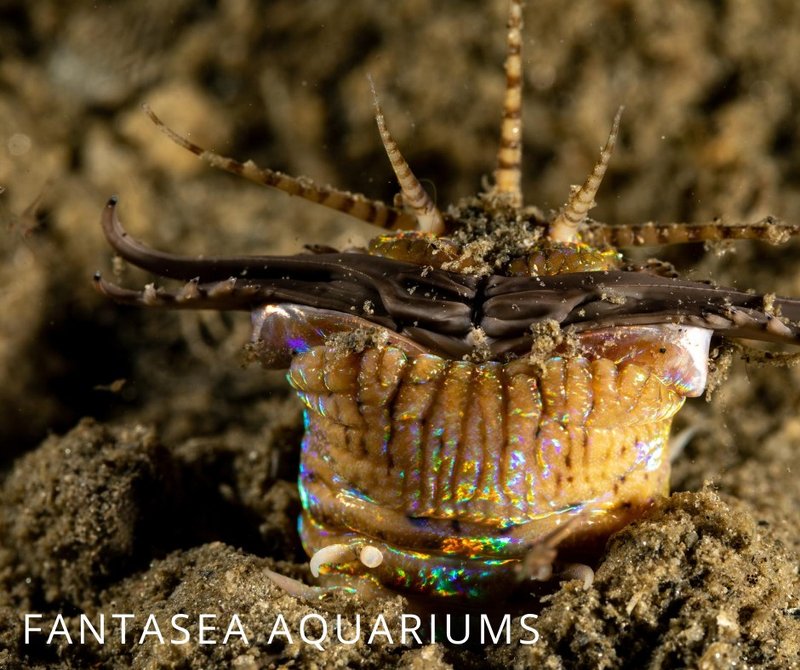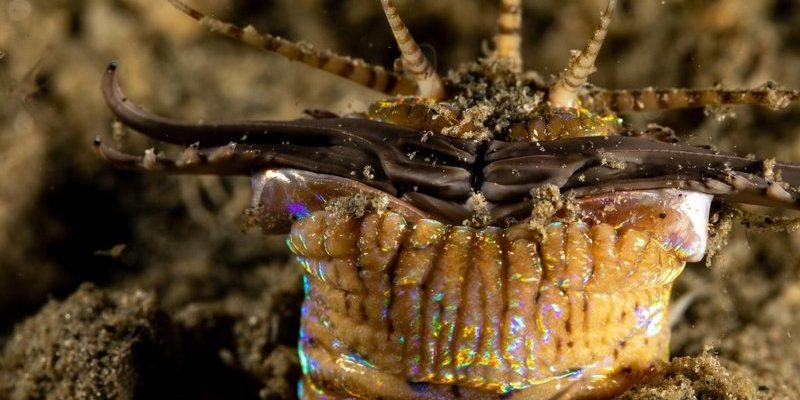
Imagine you’ve just started your reef tank, and one day you notice that some of your prized fish are mysteriously disappearing. You’ve checked your water parameters, done all the right things, but the culprit is lurking in the shadows—a Bobbit worm. You might be thinking, “How on earth could this happen?” Don’t worry; I’m here to help you navigate this watery world and keep your tank safe from these sneaky pests.
Bobbit worms can be small, but their impact can be enormous. They often hitch a ride in saltwater fish or coral when you first set up your tank, especially if you’re using a starter kit. Let’s dig into some practical tips to keep these critters at bay and ensure your reef tank thrives.
What are Bobbit Worms?
Bobbit worms are fascinating yet formidable creatures. They belong to a family of marine bristleworms called *Eunice aphroditois*. These worms can grow quite long—sometimes even a few feet! They have a distinctive appearance, with long, segmented bodies and a head full of sharp, grasping jaws.
Here’s the thing: Bobbit worms are not your average pests. They are predatory and can make a meal out of unsuspecting fish that swim too close to their burrows. They bury themselves in the substrate during the day, using their sharp jaws to capture prey at night. If you’re not aware of their presence, you could lose fish before you even realize there’s a problem.
When you’re setting up a reef tank, especially with starter kits, it’s crucial to be informed about these little buggers. They often come in as hitchhikers on live rock or sand, so having a good understanding of what they are and how to spot them is vital for any tank owner.
How to Identify Bobbit Worms
Identifying Bobbit worms isn’t as tricky as it sounds. They often keep a low profile, but if you know what to look for, you can catch them before they cause any damage. Here are some signs that might indicate their presence in your tank:
- Burrows in the substrate: Bobbit worms create long, narrow holes in the sand or gravel. If you see these, take a closer look.
- Long, segmented bodies: If you spot a long, thin piece of the worm peeking out from its burrow, you’re likely looking at a Bobbit worm.
- Missing fish: A sudden disappearance of fish can be a telltale sign. If you see your fish acting skittish, they may be sensing a predator.
Honestly, spotting these critters can be a bit alarming, but don’t panic! If you keep a close eye on your tank and its inhabitants, you’ll be better prepared to catch any unwelcome guests.
Preventing Bobbit Worms in Your Reef Tank
Now that you know what Bobbit worms are and how to identify them, let’s dive into prevention. After all, preventing them from entering your tank is far easier than trying to remove them once they settle in. Here’s how you can keep your reef tank safe:
- Quarantine new additions: Before adding fish or coral, quarantine them for at least two weeks. This allows you to check for unwanted hitchhikers.
- Buy reputable sources: Purchase live rock and corals from trusted vendors who inspect their materials for pests.
- Clean your substrate: Using a fine mesh net to sift through your sand or gravel can help catch smaller worms before they get established.
Let me explain. Think of your tank like a new home. Just like you wouldn’t invite every stranger off the street in for coffee, you want to make sure that what you bring into your reef tank is clean and safe.
Dealing with an Infestation
If you’ve discovered that a Bobbit worm has already made itself at home, don’t despair. There are effective methods to deal with an infestation, but it requires a bit of determination and care. Here’s what you can do:
- Manual removal: If you’re comfortable, you can gently extract the worm using a pair of tweezers. Be careful, as they can bite!
- Trap and bait: You can set up a simple trap using some fish food. Place it near the worm’s burrow at night. When it comes out to feed, you can catch it.
- Consult a professional: If you’re unsure about handling the situation, don’t hesitate to ask a local aquarium expert for help.
You might be wondering, “Is it really worth all this trouble?” Absolutely! Keeping your reef tank healthy means everything.
Choosing the Right Starter Kit
When you’re starting your reef tank journey, choosing the right starter kit can make all the difference. A good kit will include everything you need to avoid potential issues like Bobbit worms. Here’s what to look for:
- Quality live rock: Ensure that the kit includes live rock from reputable sources with minimal pests.
- Filtration system: A good filtration system helps maintain water quality, which can boost your tank’s overall health.
- Clear instructions: Look for kits that provide clear setup and maintenance guides to help you through the process.
Honestly, it’s about setting yourself up for success. The right starter kit can save you a lot of headaches down the line.
Final Thoughts on Bobbit Worms
Bobbit worms might seem scary at first, but with the right knowledge and precautions, you can keep your reef tank safe. By being aware of their signs, properly quarantining new arrivals, and choosing a quality starter kit, you can prevent these sneaky pests from crashing your underwater party.
Remember, a reef tank is a long-term commitment. Taking the time to educate yourself and prepare will ensure you enjoy a thriving marine ecosystem. So go ahead, dive in, and enjoy the beauty of your reef tank without the worry of Bobbit worms lurking around. Happy fishkeeping!

